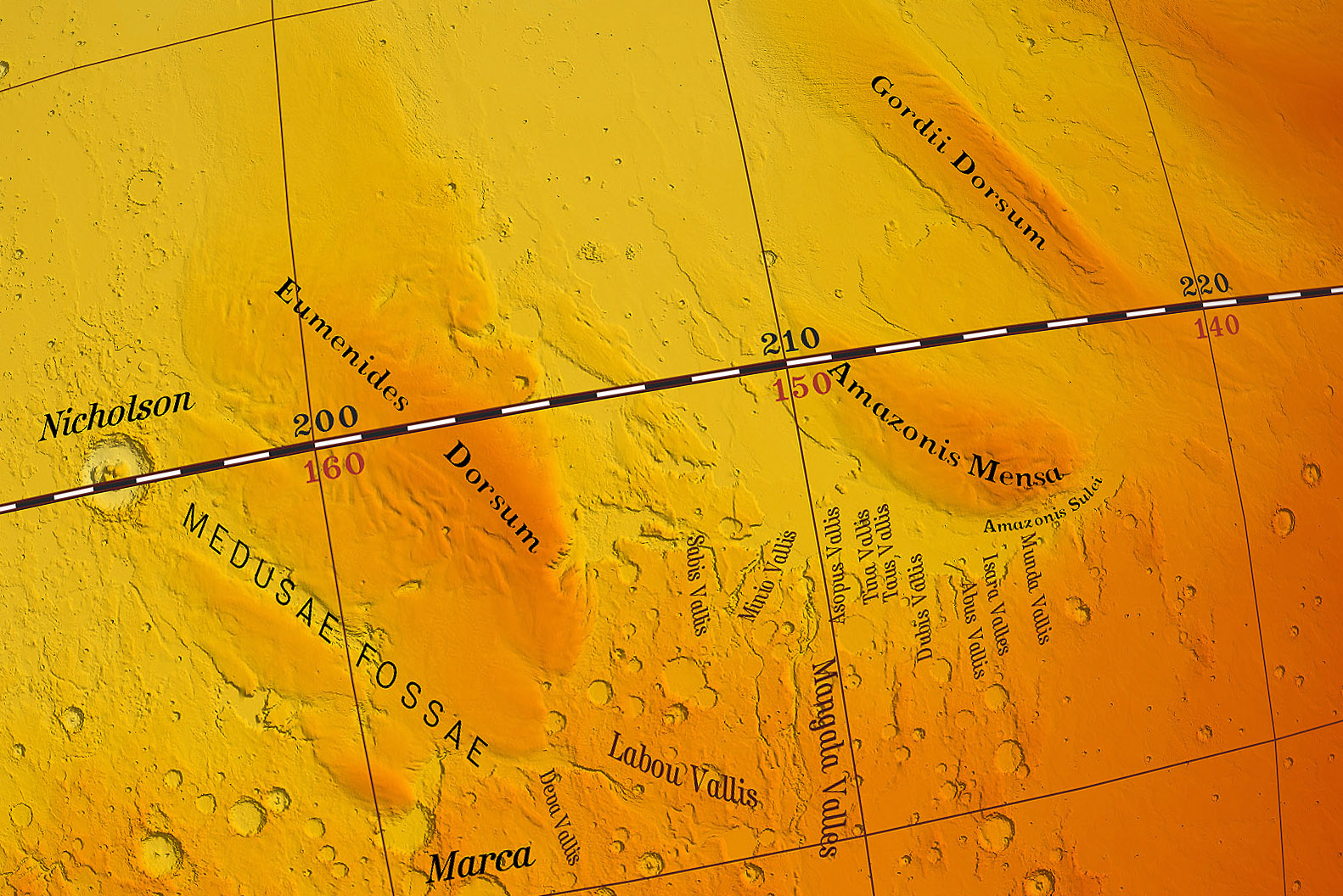Geologic description and interpretation:
The
Medusae Fossae deposits are interpreted as pyroclastic ash that is widespread
over the planet and accumulated at the dichotomy boundary,[1]
stretching from just south of Olympus Mons to Aeolis Planum[2]The
Medusae Fossae is characterized by wind-sculpted landforms, most notably
eroded ridges known as yardangs. The composition of the Medusae Fossae
(=Medusae Fossae Formation/unit) is not known, but candidates include indurated
(hardened) volcanic ash or remnants of
that formed in a different Martian climate[3]
Any such materials, irrespective of their origin, may simply accumulate at the
surface and become redistributed by the wind as wind regimes change[4].
The
origins of the MFF are still controversial, but the three primary hypotheses
are: ash flow, ash fall, and aeolianite (i.e., loess).[1] Aeolis Planum is composed of semi-resistant materials which have been
eroded into linear ridges called yardangs[2].
Stretching from just south of Olympus Mons to Aeolis Planum (Aeolis Planum,
Zephyria Planum, Lucus Planum, Eumenides Dorsum, Amazonis Mensa, Gordii Dorsum)
is a region called [or: covered b/composed of] the Medusa Fossae Formation. Its
materials are completely sculpted by the wind.[3]
Medusae Fossae unit forms vast, discontinuous deposit
along south border of Elysium and Amazonis Planitiae. Reaches hundreds of
meters in thickness. Appears to be made up of sequence of layers Interpretation: volcanic ash deposits from local, buried
vents and (or) other uncertain origin(s). Ridges and grooves in most cases
appear to be wind-eroded landforms controlled by structural fabric and (or)
wind patterns[4]. | Geológiai leírás és magyarázat:
A
Medusae Fossae Formáció üledékeinak anyaga piroklasztit (vulkáni) hamu.
Az egész bolygón tovaterjedtek és az É-D dichotómia határon halmozódtak
föl. Anyagukat később a szél formálta maradékgerincekké. Egy másik
elmélet szerint anyaguk lösz. Lásd még: Aeolis Planum |

